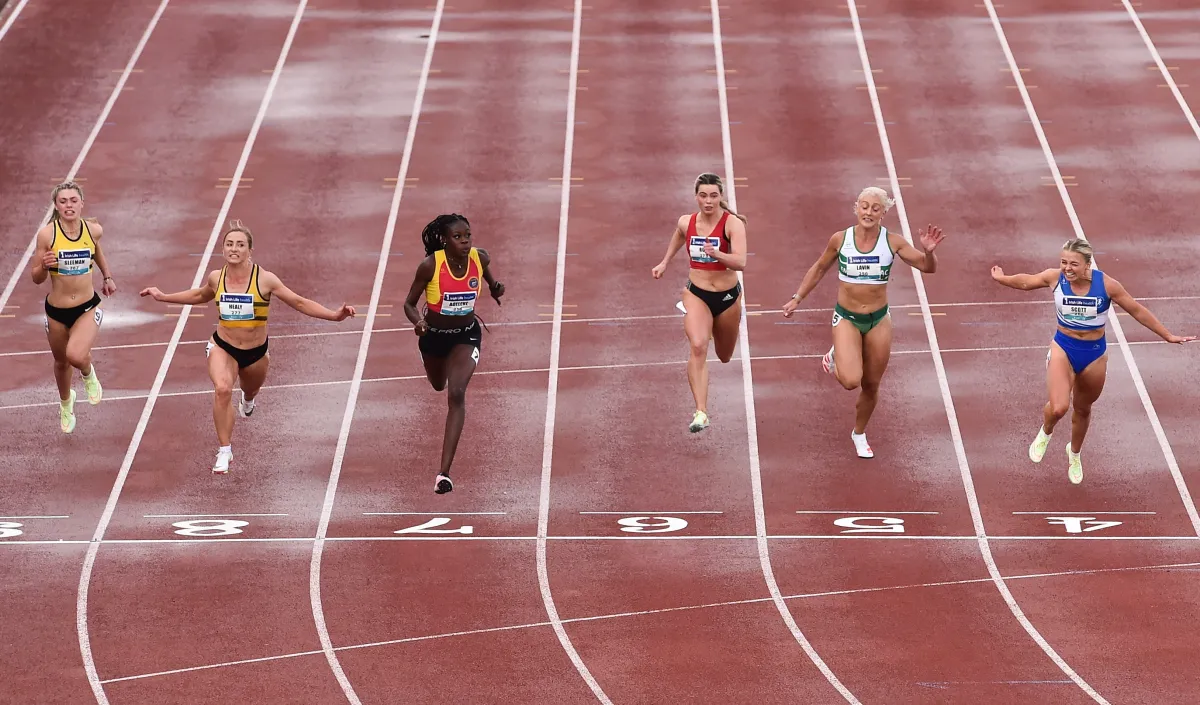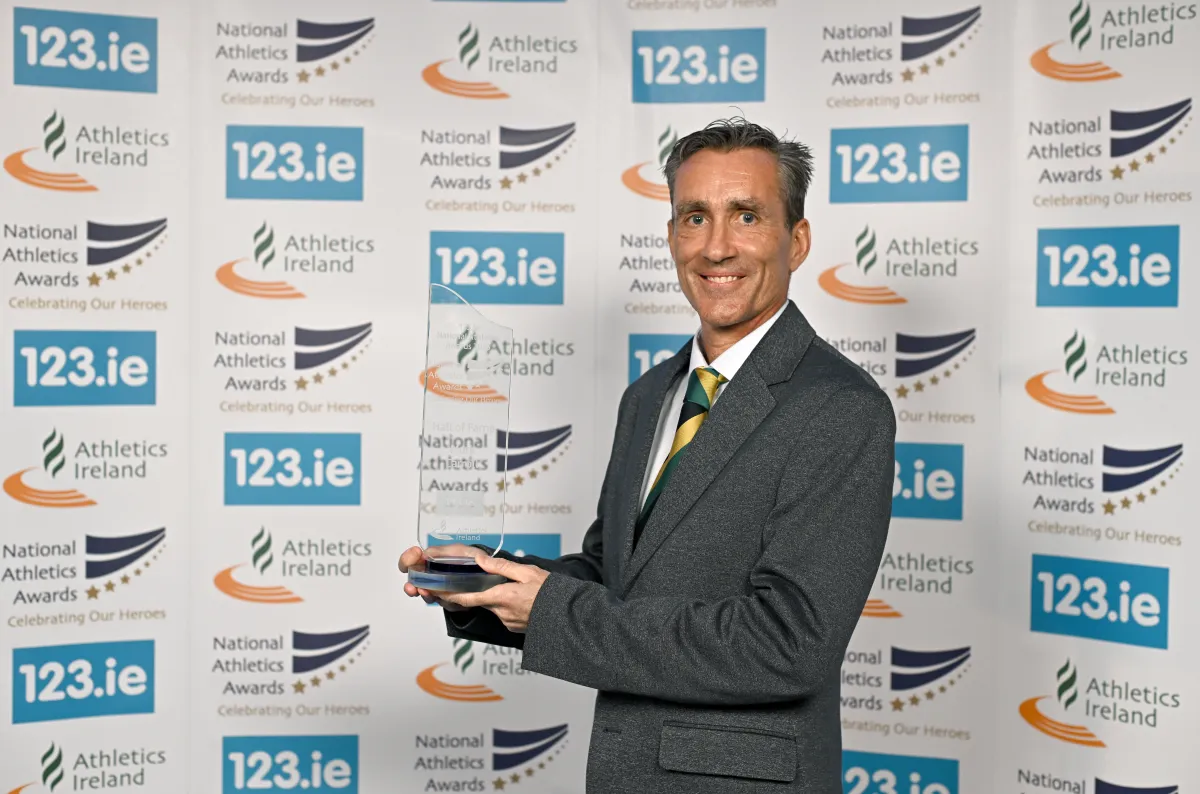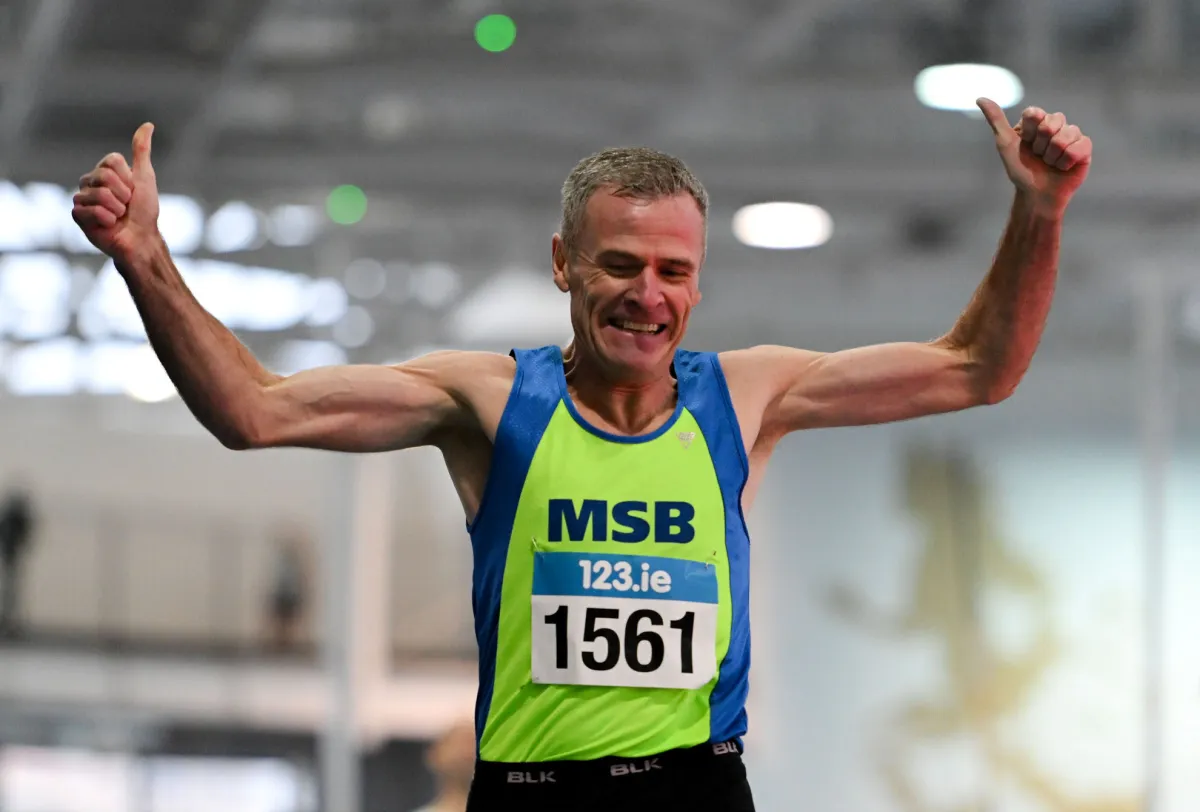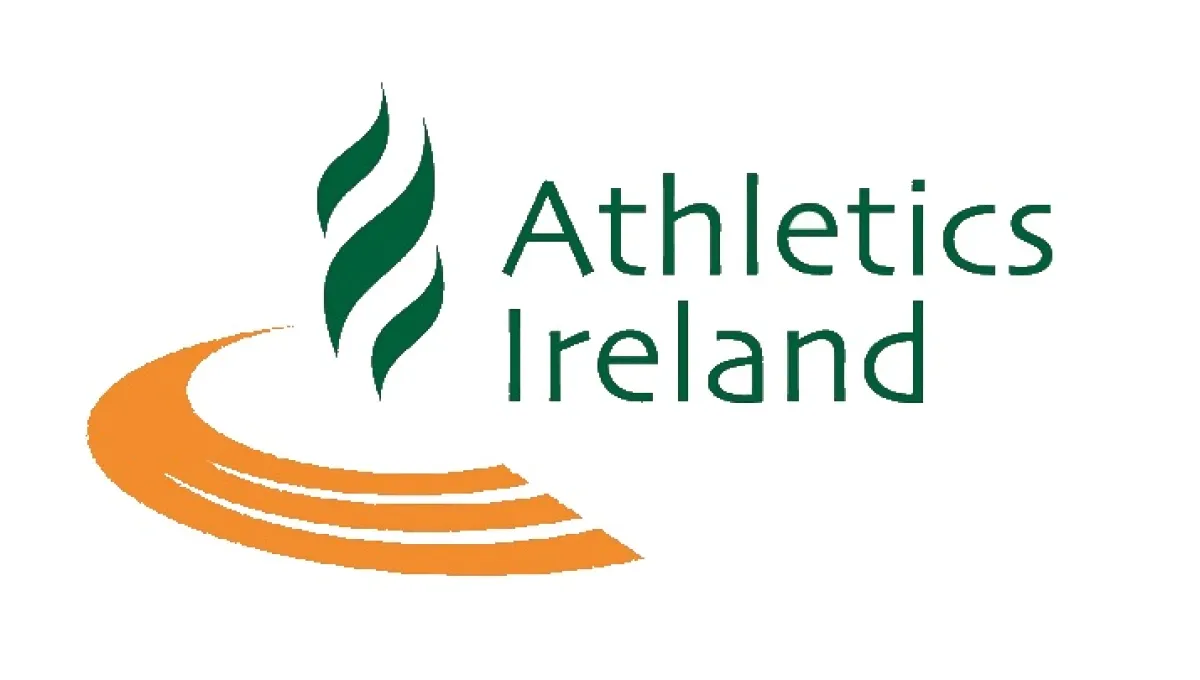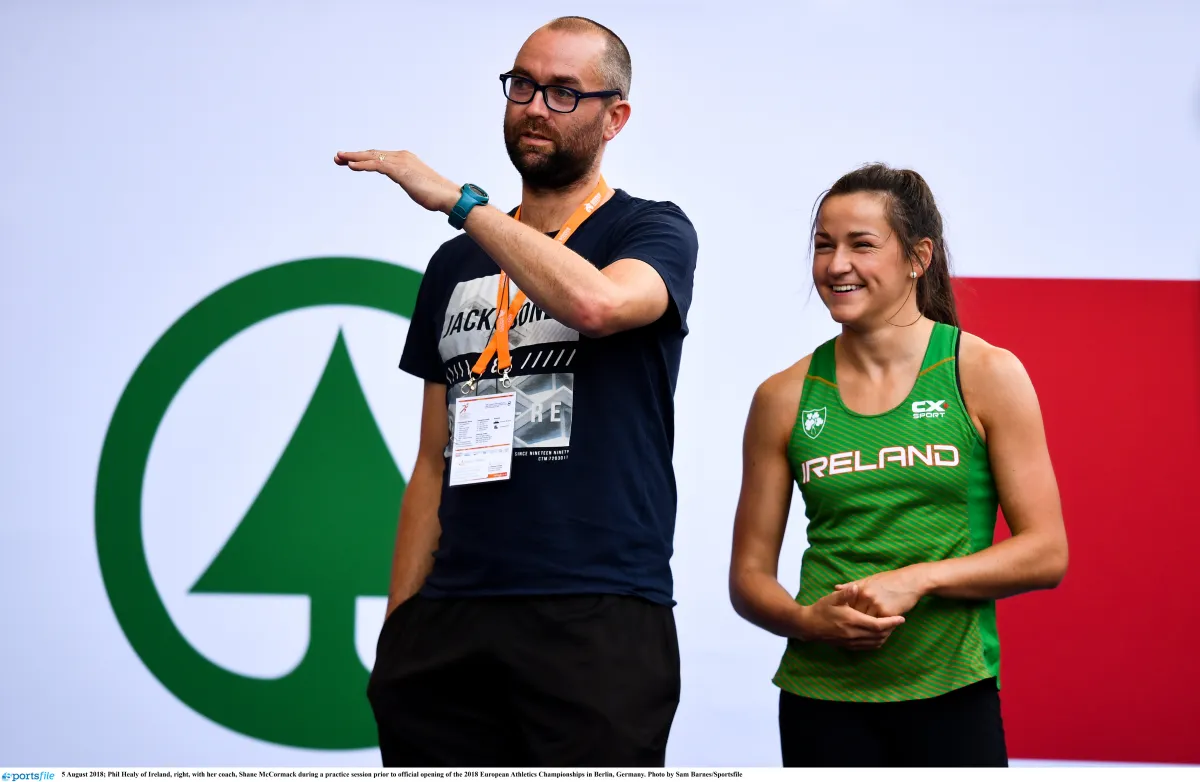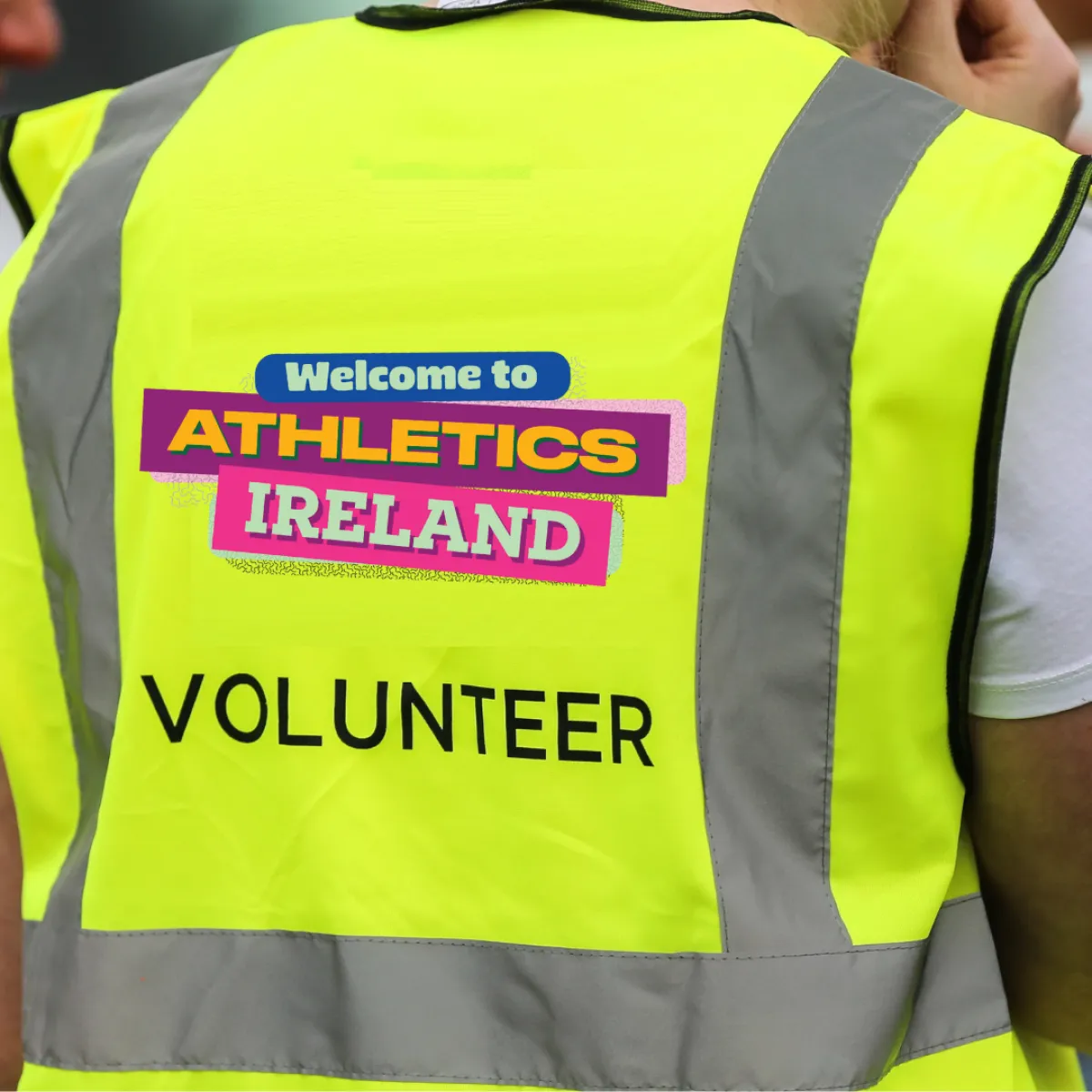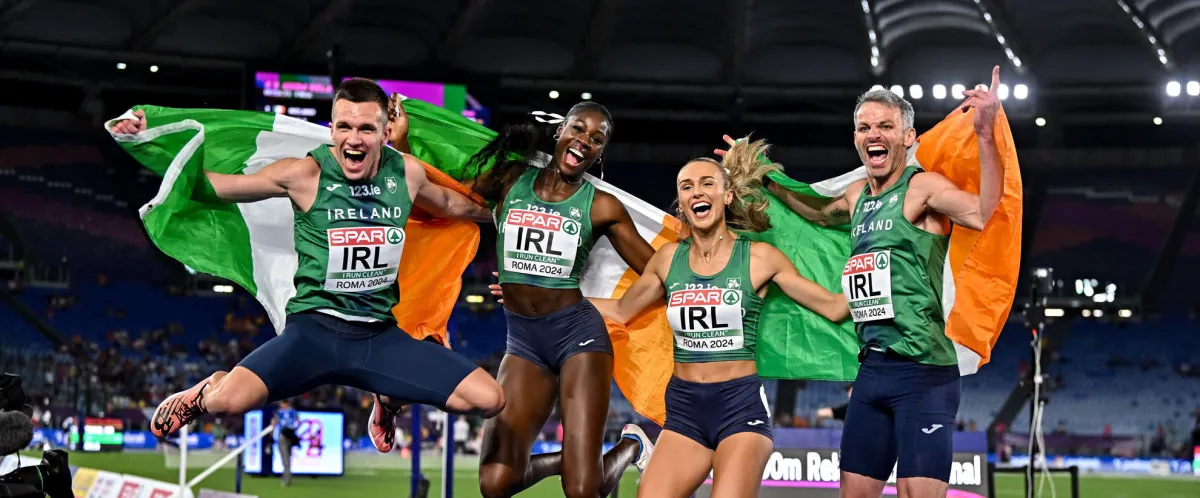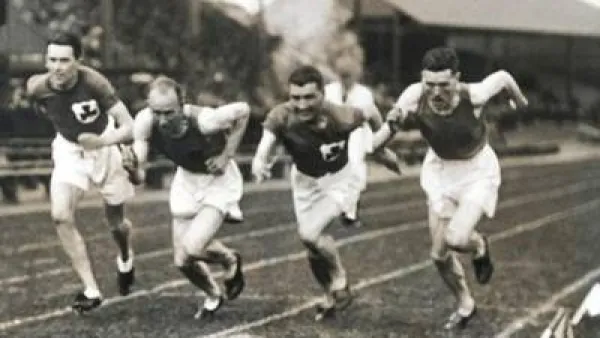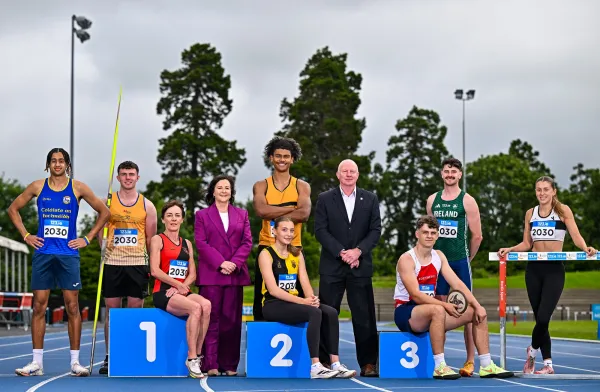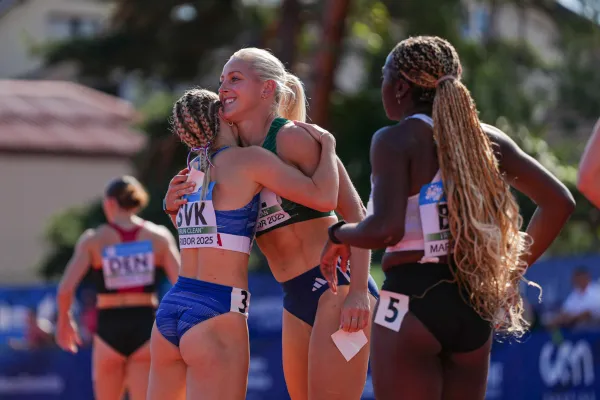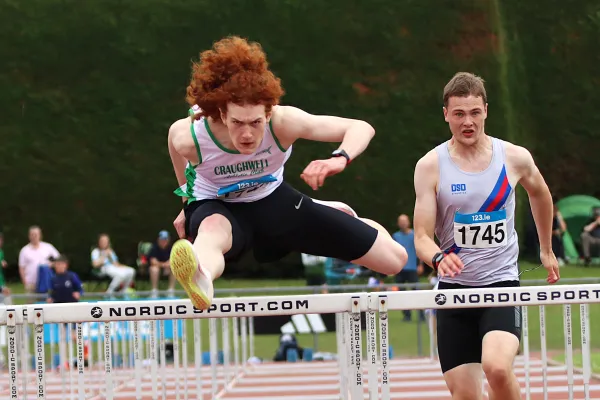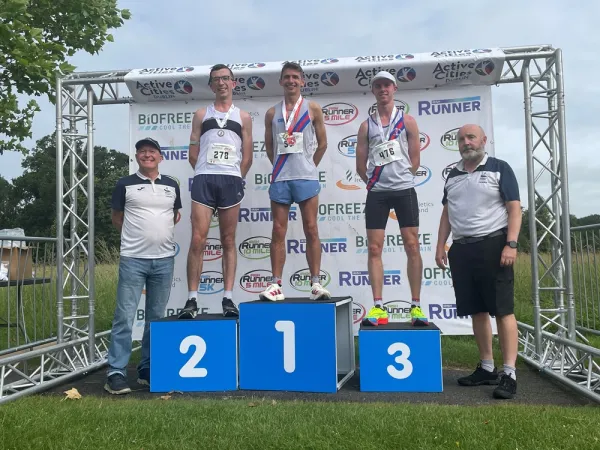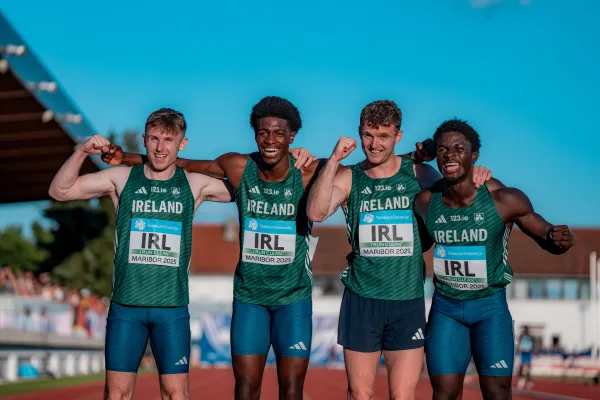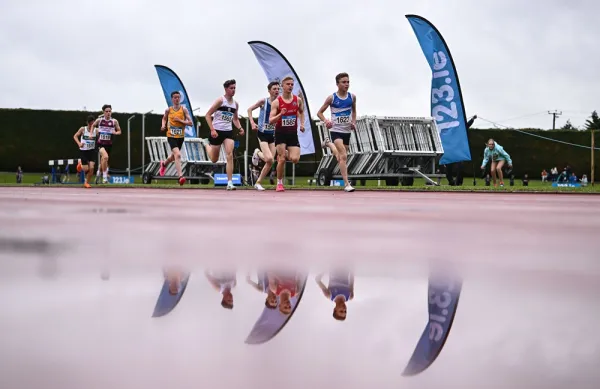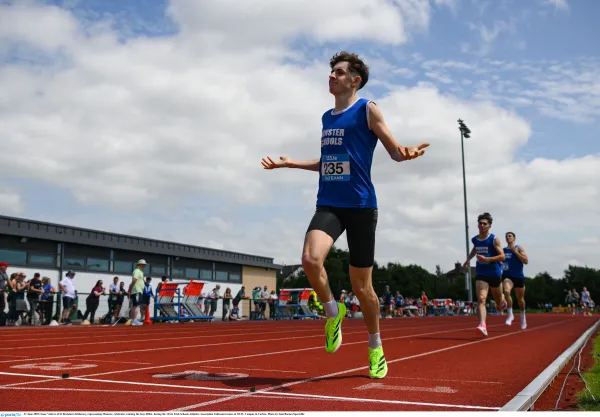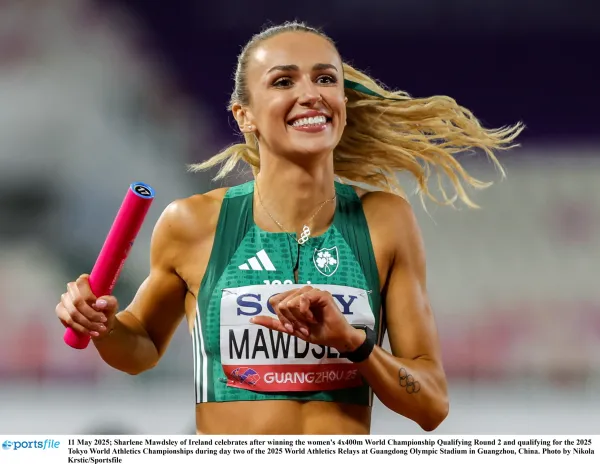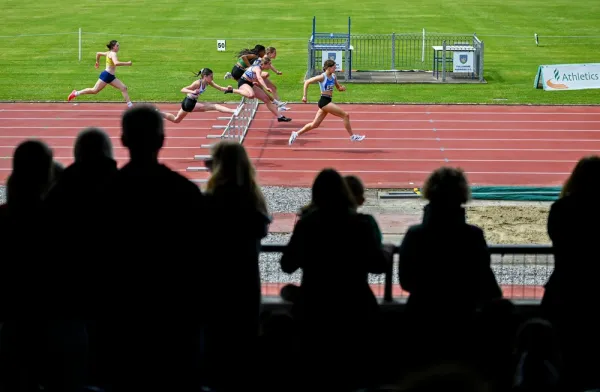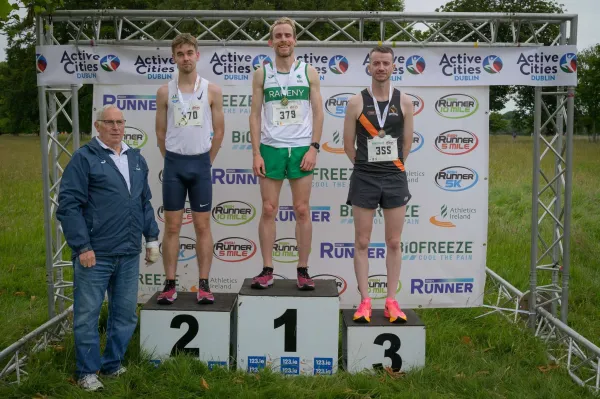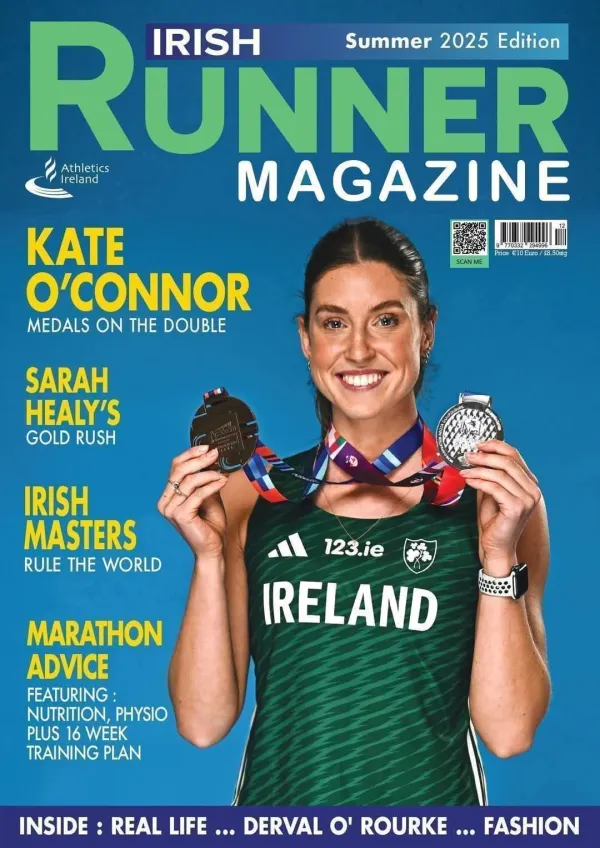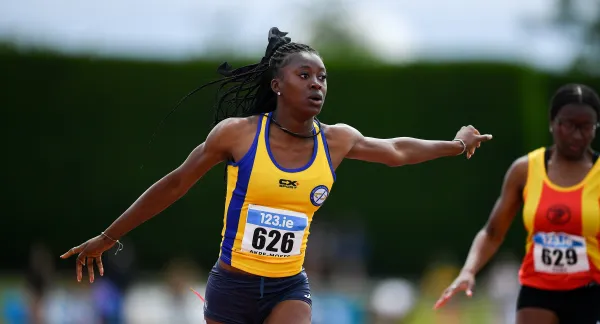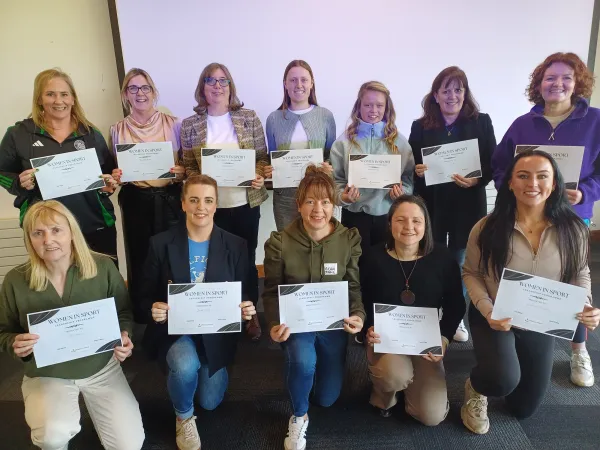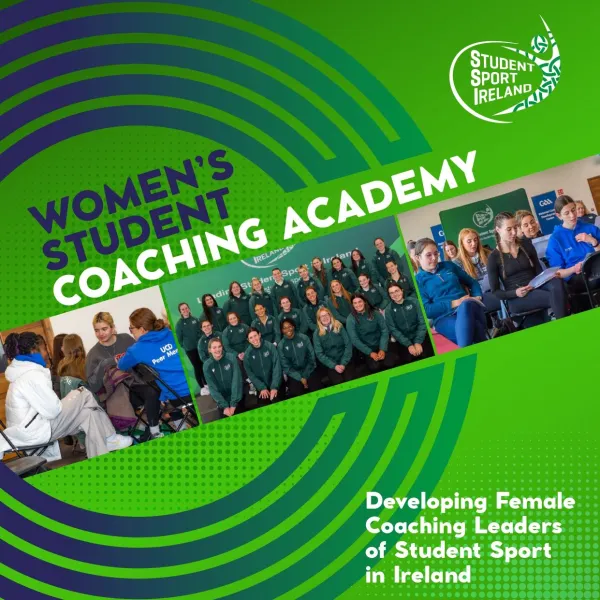Starting from Scratch
The sport of ‘Athletics or ‘Track and Field’ can be traced back through history for thousands of years. In Greece it is argued that the first of the ancient ‘Olympic Games’ can be traced back to the Iron Age. At the the foot of Mount Kronious, in the valley of Elis a simple foot race of no more than two hundred meters, was the start of an ancient festival that would develop to over five days of competition and alongside various athletic pursuits, the games were held to honour the god Zeus.
In Ireland too we have an athletics history which has a heritage that stretches back into the depths of our history. The Tailteann Games or Aonach Tailteann are dated back by some historians to the Bronze Age but definitely lasted from the earliest stages of the Iron Age right through to early medieval Ireland.
Whether at Olympia or in Teltown in Meath these festivals included competitions of running, jumping and throwing among other feats of athletic prowess. Of course sport takes place in a wider context. The ancient Olympics came to an end not only as a consequence of natural disasters such as earthquakes and flooding but also because the region was being raided by the Heruli, an early Germanic people. In Ireland the end of the Tailteann Games is recorded in the ‘Annals of the Four Masters’ as coming to an end after the Norman invasion of Ireland.
In the 19th century as empires collapsed around the globe the path towards national self-determination often intersected with movements built around national sporting and cultural traditions. In addition to antagonism related to Independence struggles, the 19th and 20th centuries saw the emergence of movements, which identified social class as being crucial to understanding society and social and economic struggles between rich and poor did have a major impact on sport too. Ireland was no different from other parts of the world. The Independence struggle and social-class conflict had a major impact on our sports.
In the 1850’s and 1860’s athletics was emerging as a popular pastime for many of Irelands middle class. Accounts in newspapers of the time detail successful ‘sports’ in Trinity College, Dublin; Queens University, Galway; Queens College, Cork; and Clonliffe College. One account of the events that were taking place at these ‘sports’ included, “hurdle races and flat races, long and high leaps, pole leaping, sledge throwing etc.” So not too dissimilar from the sport we know today.
Once the Irish Champions Athletics Club was formed in January 1873 it set out to hold a national championships in July of that year in Trinitys’ College Park. Those that could compete in this national championships were severely restricted as the I.C.A.C. required all those competing to be amateurs. Not only did this mean you were debarred from competition if you had competed for prize money, it also stipulated that if you were a mechanic, artisan, labourer etc. you would not be permitted to enter the event. If all that wasn’t enough, the entry fee of ten shillings (roughly £50 today) would have ruled out many competitors anyway.
Still the first national championships had taken place and the I.C.A.C also purchased over eight acres at Lansdowne Road to build Irelands first cinder athletics track. The I.C.A.C would continue to organise national championships until 1880, when it was wound up in November of that year with outstanding debts of £4000, which in todays money would be well over £500,000.
A National Association or Two?
Born in 1847, Michael Cusack from Carron in County Clare was a central figure in the Irish athletics scene in the 1870’s and 1880’s. Having excelled at school he had qualified first as a national school teacher before becoming a secondary school teacher. After time spent working at St. Colman’s, Newry and then at Blackrock College (then known as French College), Cusack went on to set up his own Civil Service Academy, where students paid for intensive preparation for entrance examinations to the police and civil service.
A self made man, in his spare time Cusack indulged his passion for athletics as a member of the City and Suburban Harriers, chairing meetings of the I.C.A.C., organising Cusack’s Academy Sports Day etc. His background as the son of a poor sheep farmer from County Clare meant that he had an understanding of how the ‘amateur’ status of the sport debarred many working class men from participating. Cusack was very forthright when he expressed his opinions at meetings or in articles in the ‘Irish Sportsman’.
After being approached by a sub-committee of the Irish Republican Brotherhood, Cusack gathered together a group of like minded athletics enthusiasts and the Gaelic Athletic Association (G.A.A.) was formed on the 1st November 1884, at a meeting in Hayes Hotel in Thurles, County Tipperary. The newly formed G.A.A. Was quickly involved in controversy as it declared in its rules, “That after the 17th March 1885 any athlete competing at meetings under other laws than those of the Gaelic Athletic Association shall be ineligible to compete at meetings under the G.A.A.”
Alongside this rule, the fact that the patrons of the G.A.A. were the Catholic Archbishop of Thurles Thomas Croke and nationalist politicians Charles Stewart Parnell and Michael Davitt, all of whom had been prominent in the Irish National Land League, led to some controversy among the ‘amateur’ athletics clubs, particularly in Dublin. Another aspect of the early G.A.A. that was contentious was the fact that G.A.A. sports were organised on Sundays.
In response the Irish Amateur Athletic Association (I.A.A.A.) had been established at a meeting in the Wicklow Hotel in Dublin on 21st February 1885. The ‘Rules of the Irish Amateur Athletic Association’ included the following provision, “On and after the ..... day of ..... 1885 anyone willfully competing at Sports not advertised to be held and held under the I.A.A.A. shall be disqualified from competing at any Sports held under I.A.A.A. Laws.”
On a number of occasions G.A.A. and I.A.A.A. sports days clashed. This along with issues such as Sunday competition got significant attention in the media and though the G.A.A. had a really successful year with over one hundred and fifty meetings organised, it was G.A.A. patron Archbishop of Thurles Thomas Croke who called publicly for an end to the ban on G.A.A. athletes competing in I.A.A.A. competition. Within months both the G.A.A. and I.A.A.A. had removed the rules in relation to restricted eligibility and the first ‘split’ in Irish athletics had come to an end.
Although politics did impact both associations over the next three decades the controversies had limited effect on most athletes.
The G.A.A. had banned all members of the Royal Irish Constabulary from membership in 1887 but this rule was actually abandoned in 1893, only to be reintroduced a decade later, when British soldiers and sailors were also banned and G.A.A. members were instructed not to compete in R.I.C. or Army Sports too.
Cultural nationalism in the early 1900’s was on the march in Ireland in terms of both the Irish language movement and the literary revival and the G.A.A. looked to establish hegemony in sporting terms and bans were placed on members playing football games that were not Gaelic football, as well hockey and cricket.
The I.A.A.A. and the Irish Cross Country Association (I.C.C.A.) continued to organise both regional and national championships during this period. They also selected teams to compete in the International Cross Country Championship, which was inaugurated in 1903 as a competition between Ireland, England, Scotland and Wales. Soon France would regularly compete and the events rotated each year from one nation to another. The I.A.A.A. also regularly selected Irish teams to compete in triangular track and field meets against England and Scotland.
Getting Across the Line
While both G.A.A. and I.A.A.A had been severely restricted in terms of competition during World War 1 and the Irish War of Independence they had survived intact. It was late 1921 that a proposal to revive the Tailteann Games was made. Cumann na nGaedheal politician James Joseph Walsh was put in charge of organising the Tailteann Games, with funding allocated and an organising committee put in place. It was seen as crucial though that the division between the G.A.A. and I.A.A.A be brought to an end. Initially the G.A.A. were reluctant but at the prompting of the Irish Universities Athletics Association (I.U.A.A.) the G.A.A. and the southern branch of the I.A.A.A were able to come to an accommodation. Dr. Rowlette of the southern branch of the I.A.A.A. rejected any opposition to the merger after the G.A.A. asked him, “not to wreck the agreement for the sake of a few Ulster Specials”.
The northern branch of the I.A.A.A saw things differently. While they accepted that the new national body would benefit athletics, they stated that they, “regret the proposed Constitution debars soldiers, sailors and police on active service in Ireland from competing at meetings of the new body”.
The G.A.A. and the southern branch of the I.A.A.A had merged all athletics activities to form the National Athletic and Cycling Association on July 18th 1922. This was seen as major progress in terms of launching the Tailteann Games. That said with the onset of the Irish Civil War, the Tailteann Games was off the agenda for a couple of years. There also now was the issue of the International Cross Country Championships as it was in dispute as to whether the newly formed N.A.C.A could represent Ireland at the event.
Due to the controversy no Irish team travelled to the International Cross Country in 1923 and the after some back and forth between the N.A.C.A.(I) and the northern branch of the I.A.A.A. as well as other national bodies, the N.A.C.A agreed to remove the exclusion rule in May 1923 and after some more hose trading between N.A.C.A and northern section of the I.A.A.A, there was for a few short months there was a unified athletics body on the island of Ireland.
N.A.C.A. On the International Stage
The International Amateur Athletic Federation (I.A.A.F) had been founded in July 1912 as the world governing body for track and field athletics. At a meeting in Stockholm, Sweden seventeen national federations signed up to this new international body. In September 1923 the N.A.C.A. made the decision to apply to the I.A.A.F. for membership.
Only a few months later a reply was received on the 11th January 1924 from J.S. Edström, President of the I.A.A.F. It read: “I have great pleasure in informing you that the Council of the International Amateur Athletic Federation has voted on your request to became a member of the Federation and that all the votes were in your favour. You are consequently now a member of the Federation, and I wish you welcome amongst us.”
The N.A.C.A. now set about selecting a team for the upcoming Olympics in Paris. The N.A.C.A agreed that selection would be based on results at the National Championships, and that “The Association Is open to all amateurs resident in Ireland, irrespective of creed or class”. A team of ten travelled to Paris- W.J. Lowe (200m); Sean Lavan (200m and 400m); Morgan McEachern (800m); J. Kelly (3000m Steeplechase); J.J. Ryan (5000m and 10000m); P.J. Ryan (Discus); J. O’Grady (Shot Putt); Larry Stanley (High Jump); J. O’Connor; W. Shanahan (Decathlon). While no medals were won three of the party made it past the first round.
The following month the Tailteann Games took place in Croke Park. With the new Hogan stand in place there was accommodation for the large number of spectators in attendance. There had been some controversy in relation to a ‘grant’ of £10,000 made to the G.A.A. for the improvement of the stadium as the Department of Finance believed it to be a loan. J.J. Walsh response to Willam O’Brien at the Finance Department was that the G.A.A. had made Croke Park available for free for the duration of the Tailteann Games and that all income would therefore accrue to the state.
Another major issue overshadowing the Games was the continued detention of republicans imprisoned during the civil war. J.J. Walsh feared that this would reduce crowds in attendance and might even cause protests during the games. As a result all were released although prominent republicans such as Eamonn de Valera did not attend the games. Still on the athletics front the games were a success. Olympic Champion Harold Osbourne of the United States starred in the high jump , while Ireland had a winner in J.J. Ryan, who won the four miles.
Four years later at the Amsterdam Olympics a team of nine were sent and Dr. Pat O’Callaghan won gold in the hammer with a throw of 51.39m. O’Callaghan and his brother Con would go on to be the stars of the Tailteann Games, held later that summer. Like four years earlier, 20,000 packed into Croke Park for the opening ceremony. O’Callaghan had a famous victory in the hammer as he throw a new Irish record of 51.84m. Dr. Pat also won the 29 lbs weight throw, while Con O’Callaghan won the decathlon by a comfortable margin.
With Ireland now firmly established on the international athletics scene it would have seemed that the future was bright. However in the years ahead the promise of these early achievements was seriously undermined as the N.A.C.A. was unable to come to terms with the Northern Ireland Athletics Association. There was also a decision by the 12th Congress of the I.A.A.F. Congress to introduce into its constitution a clause defining the limits of authority of a national governing body for athletics: “The jurisdiction of members of the International Amateur Athletic Federation is limited by the political boundaries of the country or nation they represent”. The N.A.C.A. rejected the limitation of its authority to the 26 counties of the Irish Free State. It reiterated that the I.A.A.F. accepted its membership as an All-Ireland 32-county body and a conflict that would see the N.A.C.A. boycott the Berlin Olympics and be suspended permanently by the I.A.A.F. unfold.
Note
- The research for this piece relied heavily on Padraig Griffin’s book. ‘The Politics of Irish Athletics 1850-1990’.
